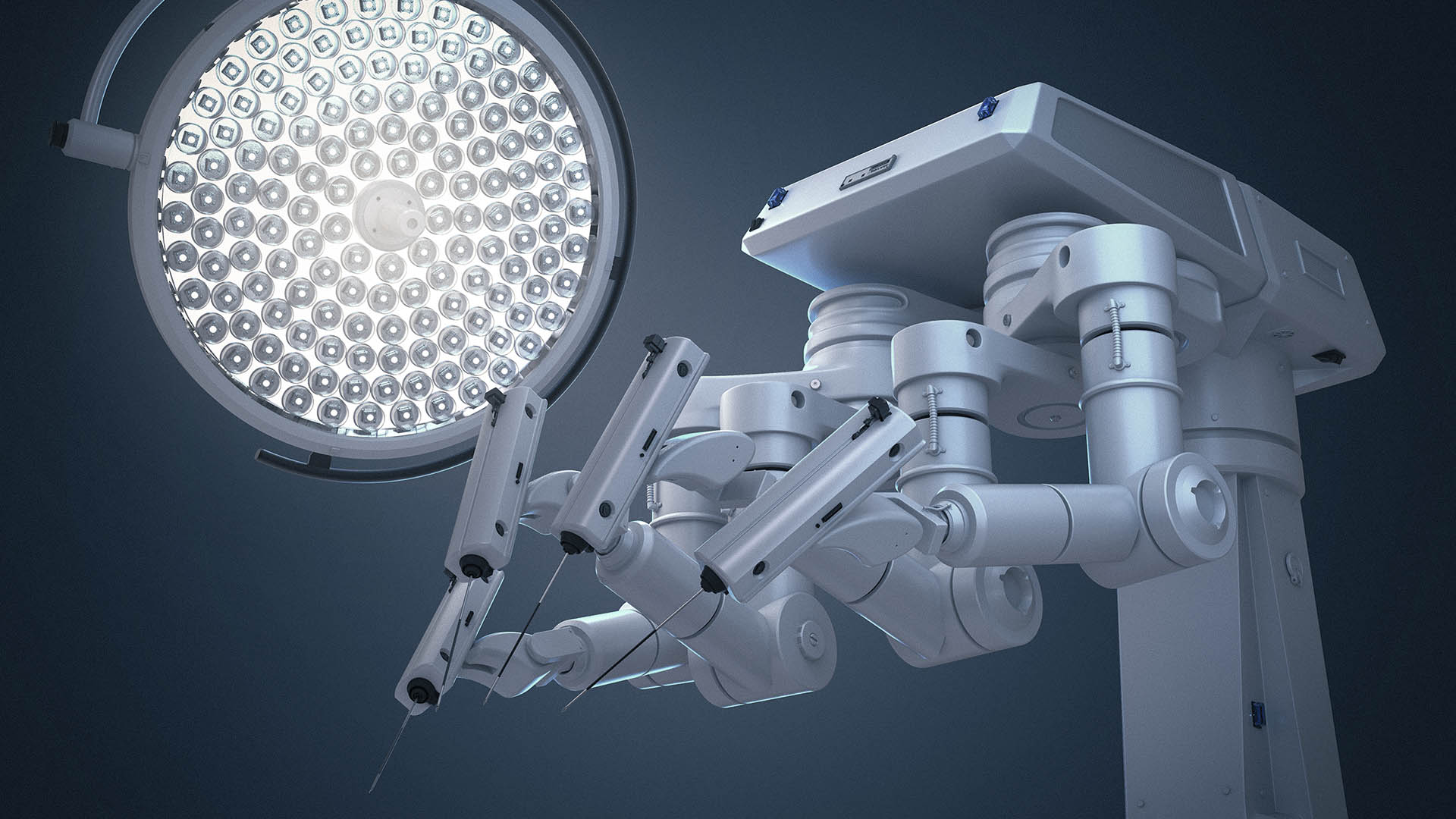
Advancement in Robotic surgery
“Surgery has advanced more in the last 15 years than in the past 150.” – Professor Antonio de Lacy.
Scientific evidence points towards robotic surgery leading to faster procedure times, more predictable outcomes, less complications and shorter length of stays in hospital, i.e. saving money for overall healthcare systems. The continued innovation of robotics, growing clinical evidence and use in novel indications bodes well for continued rapid growth for the foreseeable future while penetration rates in most indications are still in the early stages.
History of robotic surgery
Robotic surgery systems have evolved rapidly in the last 30+ years. The first ever robot assisted surgery took place in 1985 when the industry robot PUMA 560 was used to place a needle for brain biopsy using CT guidance. Two years later the first robotic laparoscopic surgery was used in cholecystectomy. The first system approved by the FDA came in 1994 when the ASEOP system by Computer Motion was approved for endoscopic surgical procedures. Around the same time Intuitive Surgical was founded and in 2000 gained approval from the FDA for the da Vinci system for general laparoscopic surgery. The system consisted of a surgeon’s console, and a two-arm robot with a camera holder. Intuitive Surgical has over the years continued to innovate and is now dominating the robotic surgery field in most procedures outside orthopedics and vascular intervention. In orthopedics, MAKO received approval in 2005 for their first robotic surgery system for knee replacement surgery and has continued to dominate this space, but in recent years are facing more competition primarily from Blue Belt Technologies which won FDA approval for the NAVIO PFS Surgical System in late 2012. In 2015 Johnson & Johnson and Google formed Verb Surgical to develop next generation surgical robotics. In 2018 Auris gained FDA approval for the Monarch robotic platform with its flexible robotics which initially will be used for bronchoscopic procedures where they will mainly compete with Intuitive Surgical’s Ion system which gained approval in early 2019.
M&A in robotic surgery
The development of the robotic surgery has not gone unnoticed by the largest medtech companies of the world, as can be seen by the historical M&A activity within the field.
There are a number of reasons why robotic surgery is rapidly gaining traction. One of the main advantages is that one is able to obtain more predictable outcomes and less complications since the modern systems improve dexterity, eliminate fulcrum effect and physiologic tremors and gives the surgeon improved 3D visualization. Another advantage of robotics is that they can be used for telesurgery, i.e. an experienced surgeon can operate on a patient in another city or country without physically being onsite. Telesurgery is still in its infancy due partly to concerns around internet reliability and infrastructure but it has been proven that it works and will increase in efficiency as technology advances. A big leap will probably come with the introduction of 5G technology which will greatly improve the latency period.
Intuitive Surgical is the dominant player and has as of June 30, 2019 over 5,000 systems installed globally. A majority of these 64% are in the US, 17% in Europe, 13% in Asia and 5% in rest of the world, while the installed base grew 13% year on year. In 2018 over a million procedures were performed with the Da Vinci system globally, meaning that every 30 seconds a new surgery is started.
In a recent report from Bank of America Merrill Lynch (“Tide still rising…a fresh, detailed look at the US TAM for surgical robotics”, August 2019), it is estimated that in the US alone 6 million procedures are performed annually which could be addressed by Intuitive Surgical’s robotic systems. The penetration rate in 2018 was only 13% and penetration rates outside of the US is even lower, in the single digits. They further estimate that the US market could support up to 15,000 robots considering each robot has a maximum capacity of 400 procedures per year. Within the urology space, newly trained surgeons exclusively use robotics in prostatectomy and has now become the standard of care. Other areas where penetration rates are already relatively high and moving towards this level of care is within gynecology surgeries, hernia repair as well as thoracic surgery.
The rapidly increasing interest in this field can also be seen by the number of scientific publications in the area of robotic surgery.
We anticipate that the competition within robotic surgery will intensify in the next few years as many of the large medtech companies have invested heavily in this space and novel systems are under development, with new launches planned in the coming years. At the same time penetration rates in most of the currently viable indications are still low and will continue to increase. Companies which have built a wealth of clinical data and surgical procedures where current systems are starting to become the standard of care will be hard to replace since future robotic systems will have to outperform both when it comes to clinical outcomes and user experience for the surgeons.
At C WorldWide, we are following the development in the robotic surgery space closely, and we continue to monitor companies exposed to this exciting growth area.
